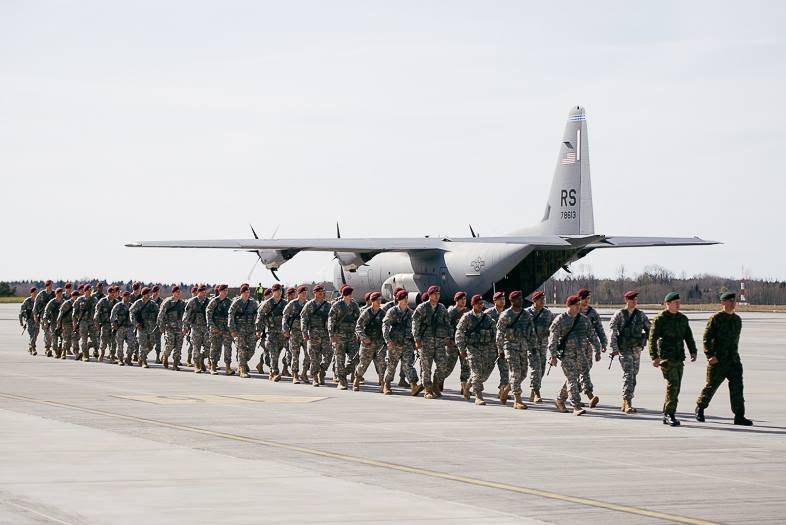NATO should deploy, as a minimum, a multinational “battalion-plus” battle group with a range of enablers and force multipliers in each of the Baltic states – Estonia, Latvia and Lithuania – according to a recent report by the International Centre for Defence and Security.
The report, titled “Closing NATO’s Baltic Gap”, suggests this battle group would, together with the additional US Army presence, be able to create a “speedbump” for Russia, should it decide to attack its western neighbours. A battalion can range in size from 300 to 1,500 or more soldiers, depending on the nature of the mission assigned.
The report was compiled by general Wesley Clark, NATO’s former supreme allied commander Europe; Jüri Luik, the director of the International Centre for Defence and Security; general Egon Ramms, the former commander of NATO allied joint force command Brunssum; and general Richard Shirreff, a former NATO deputy supreme allied commander Europe.
The experts say that with the present regime in the Kremlin, “Russia poses a serious threat to NATO, particularly to its eastern-flank allies”.
“The [Russian] regime has shown its willingness and ability to use military force, or the threat of it, to achieve its political objectives and, in the case of Ukraine, flagrantly violated the existing international order and fundamental principles of European security,” the report says. “It has also shown a taste for high-risk opportunistic gambling and the ability, time and again, to surprise the West. To prevent such a surprise from happening in the Baltic area, where the regional balance of conventional forces greatly favours Russia over NATO, the Alliance’s strategy and posture need to be adapted.”
While NATO allies have only company size units rotating through the Baltic states, Russia is creating new divisions and armies and fielding cutting-edge capabilities in their vicinity, the report goes on.
“NATO’s current posture, which is reliant on the reinforcement of the Baltic states, lacks credibility. The Alliance would be unable to deny Russia a military fait accompli in the region and, given Russia’s ‘anti-access/area denial’ (A2/AD) capabilities, to rapidly deploy additional forces there.”
In addition to suggesting a multinational “battalion-plus” battle group in each of the Baltic states, the authors of the report also say that a quick reinforcement of the Baltic states by the allies should be made more credible by pre-positioning equipment “much closer to the frontline than 1,600 km away from it as currently planned. During the Cold War, this distance was only 300 km. We recommend that at least a battalion-worth of heavy equipment be pre-positioned in each Baltic state in order to be able to surge the presence of Allied troops rapidly when necessary.”
“NATO has too often acted like a homeowner who sets the alarm once the burglars have left.”
The report also says that NATO’s nuclear deterrent “should be strengthened by signalling to Russia that Moscow’s strategy of using sub-strategic nuclear weapons to de-escalate conflict would be a major escalation and would warrant the Alliance’s nuclear response”.
“NATO must signal to Russia that, in case of aggression against any NATO ally, there is no such thing as a limited conflict for the Alliance, and that it will contest Russia in all domains and without geographical limitations,” the report adds.
The alliance must act with a sense of urgency when it comes to reinforcing its deterrence posture in the Baltic states, where NATO is most vulnerable. “NATO has too often acted like a homeowner who sets the alarm once the burglars have left,” the compilers of the report conclude. “A general change in mindset is needed – a culture of seizing the initiative and actively shaping the strategic environment should become the Alliance’s modus operandi. The Alliance’s decision-makers and general public must realise that the costs of credible deterrence by denial pale in comparison to the costs of deterrence failure.”
I
Cover: soldiers from the US Army’s 173rd Airborne Brigade Combat Team arriving to Estonia in 2014. Photo by Rene Riisalu/courtesy of Estonian Defence Forces.

